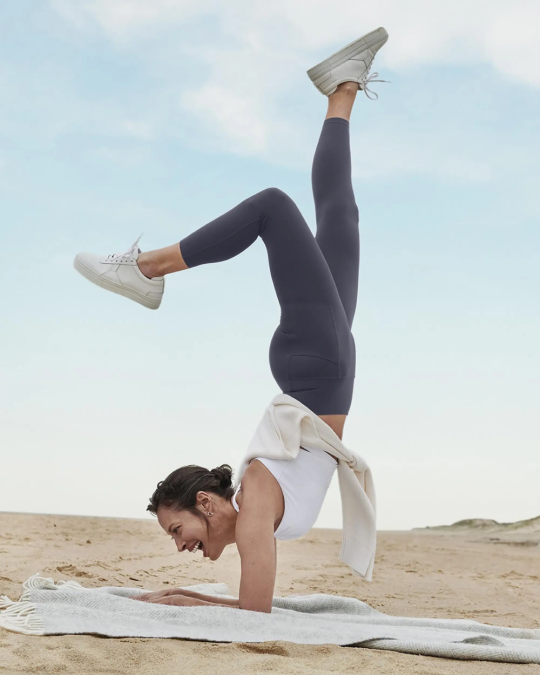#pincha mayurasana
Photo
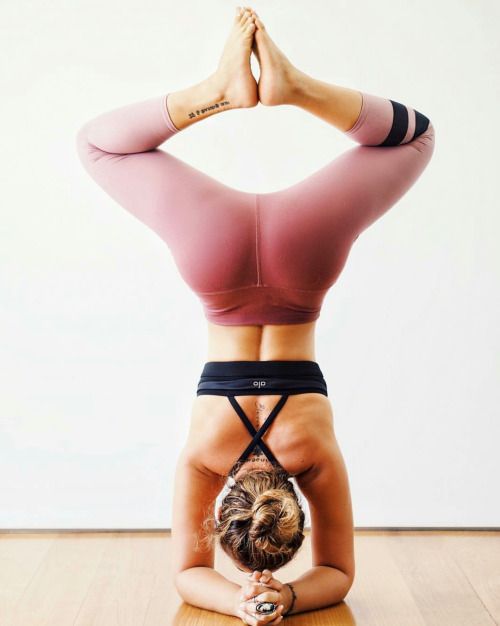
(via Pin on Yoga ~ Zen || Curated with love by yogadaily)
#pincha mayurasana#yogabun#yoga#yogini#yogi#asana#asanas#yoga pose#yoga posture#yoga daily#yoga aesthetic#yoga motivation#yoga inspiration#manifest#manifesting#fitness#health and fitness
66 notes
·
View notes
Text
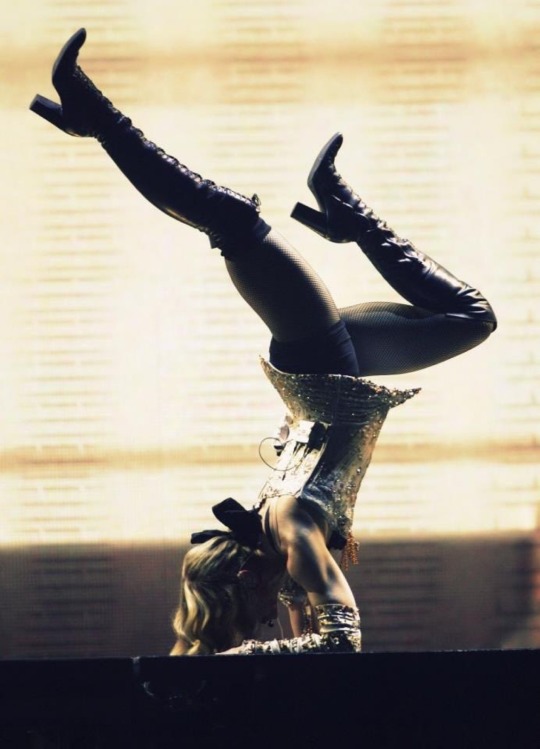
18 notes
·
View notes
Text
Unleashing Physical Fitness: How Yoga Enhances Flexibility and More

In today's fast-paced world, physical fitness is essential for overall well-being. While traditional exercises are popular, yoga offers a transformative approach that extends beyond physicality. This article explores the profound impact of yoga on physical fitness, highlighting its benefits, key poses, different styles, and its role in weight management, injury prevention, rehabilitation, and athletic performance enhancement.
Benefits of Yoga for Physical Fitness
Yoga provides numerous benefits for physical fitness:
Improved Flexibility: Yoga's gentle stretches and poses gradually increase flexibility and range of motion.
Increased Strength and Tone: Engaging various muscle groups in yoga poses leads to improved strength and muscle tone.
Enhanced Balance and Coordination: Balancing poses challenge practitioners to improve balance and coordination.
Better Posture and Alignment: Yoga promotes proper alignment, leading to improved posture and reduced discomfort.
Boosted Cardiovascular Health: Dynamic styles like Power Yoga and Vinyasa Flow elevate heart rate and enhance cardiovascular health.
Key Yoga Poses for Physical Fitness
Incorporate these essential yoga poses into your practice:
Sun Salutations and Vinyasa Flow: Dynamic sequences like Sun Salutations and Vinyasa Flow provide a full-body workout, improving strength, flexibility, and cardiovascular fitness.
Warrior Poses: Warrior I, II, and III build lower body strength, stability, and endurance.
Plank and Chaturanga: These poses strengthen the core and upper body, improving overall strength and stability.
Tree Pose and Eagle Pose: Balancing poses enhance stability, coordination, and focus.
Different Yoga Styles for Physical Fitness
Explore these yoga styles to enhance physical fitness:
Power Yoga: A dynamic and vigorous style that focuses on strength, endurance, and flexibility.
Ashtanga Yoga: Follows a specific sequence, emphasizing strength, flexibility, and breath control.
Bikram Yoga: Practiced in a heated room, it increases flexibility, promotes detoxification, and offers a cardiovascular challenge.
Yin Yoga: Targets deep stretching and relaxation to improve flexibility, joint mobility, and mental relaxation.
Yoga for Weight Management
Yoga supports weight management in the following ways:
Calorie Burn and Metabolism Boost: Dynamic yoga styles increase calorie burn and boost metabolism.
Mindful Eating and Body Awareness: Yoga cultivates mindfulness, promoting awareness of the body and mindful eating habits.
Stress Reduction and Emotional Balance: By reducing stress levels and promoting emotional well-being, yoga helps combat stress-induced eating.
Yoga for Injury Prevention and Rehabilitation
Utilize yoga for injury prevention and rehabilitation:
Gentle and Restorative Yoga: Slow, mindful movements and deep relaxation prevent injuries and improve flexibility.
Modified Poses: Yoga poses can be modified to accommodate physical limitations, ensuring safe practice and promoting healing.
Complementary Therapy: Yoga can aid in rehabilitation by restoring mobility, strength, and flexibility while fostering a healing mindset.
Yoga for Athletic Performance Enhancement

Yoga complements athletic performance:
Increased Flexibility and Range of Motion: Yoga's emphasis on stretching enhances flexibility and range of motion.
Body Awareness and Proprioception: Yoga cultivates body awareness, optimizing movements and preventing imbalances.
Injury Prevention and Faster Recovery: Yoga aids in injury prevention, faster recovery, and active rest during training.
Mental Focus and Stress Reduction: Yoga improves mental focus, reduces performance anxiety, and manages stress levels.
Conclusion
Yoga offers holistic benefits for physical fitness, including flexibility, strength, balance, and cardiovascular health. With various poses and styles available, yoga can be tailored to specific fitness goals, weight management, injury prevention, rehabilitation, and athletic performance enhancement. Embrace the transformative power of yoga and unlock your physical fitness potential.
#power yoga poses#ashtanga yoga#hot yoga#30 minutes power yoga#yoga for athletes#fitness yoga#surya namaskara#pincha mayurasana#modified yoga poses#modified yoga for injury#yoga for people with disabilities#yogabenefits#yoga
0 notes
Text

on the sofa after my pincha mayurasana series
4 notes
·
View notes
Text

First Quarter in Virgo
Saturday 27th May 2023 - 15:22 UTC
As the First Quarter Moon shines in Virgo, it's time to focus on practical matters and details. This transit encourages us to be organized and efficient, especially in our work and daily routines. Use this energy to tackle any tasks or projects that have been lingering on your to-do list. Don't forget to take care of your physical health through exercise and proper nutrition. Embrace this time as an opportunity to make positive changes in your daily life.
Yoga Pose: Dolphin Pose (Ardha Pincha Mayurasana) is perfect for the First Quarter in Virgo. This pose helps to cultivate focus and concentration, while also strengthening the core, arms, and shoulders. It helps to build stability and strength, allowing you to navigate the analytical, detail-oriented energy of Virgo with ease.
Read more about First Quarter in Virgo
And don't forget to check Your Horoscopes for May 2023
10 notes
·
View notes
Text
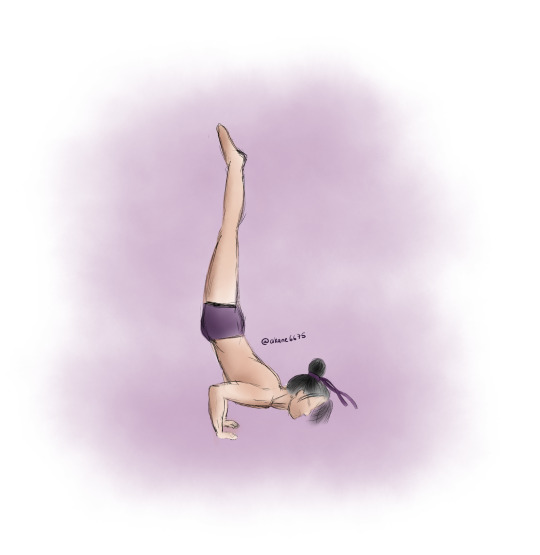
Jiang Cheng
Forearm stand / Pincha Mayurasana
Yes. I know he has baby hands 😭
(Do let me know if I got the pose names wrong)
#jiang wanyin#jiang cheng#mo dao zu shi#danmei#mo xiang tong xiu#grandmaster of demonic cultivation#yoga#forearm stand#pinchamayurasana#procreate#digital art
15 notes
·
View notes
Photo

Pincha Mayurasana (Feathered Peacock or Forearm Balance Pose) variation~ Perfect to calm the mind, digestion and circulation. The practice: Start with keeping your keep your shoulder blades lifted and open. Press your forearms, and wrist into the ground. Keep your core engaged. This will create a supportive and strong foundation. . . . . . . #yogaforyou #bodybymelaniefitness#beautyfit #nutrition #smile #fitnessmodel https://www.instagram.com/p/CjgXUXLOggJ/?igshid=NGJjMDIxMWI=
2 notes
·
View notes
Text
Discover Hidden Yoga Asanas for Ultimate Well-being

In the hustle and bustle of modern life, finding an effective and holistic approach to fitness and well-being is crucial. Yoga, an ancient practice with roots in India, has gained immense popularity for its ability to transform both the body and mind. In this 28-day journey, we will explore five hidden yoga asanas that promise to not only enhance your physical fitness but also contribute to a profound sense of inner balance and peace.
Day 1-4: Establishing the Foundation
Before diving into the hidden gems of yoga, it's crucial to establish a solid foundation. The initial days of your 28-day yoga challenge will focus on fundamental postures and breathing techniques. These include Tadasana (Mountain Pose), Sukhasana (Easy Pose), and Pranayama (breath control). These basic practices create the groundwork for a successful and transformative yoga experience.
Day 5-7: Unveiling the Hidden Gems
Now that you've laid the foundation, let's explore five lesser-known yoga asanas that can truly elevate your practice.
Dolphin Pose (Ardha Pincha Mayurasana):
Begin on your hands and knees, aligning your wrists under your shoulders and your knees under your hips.
Lower your forearms to the mat, keeping them parallel to each other.
Lift your hips toward the ceiling, straightening your legs as much as possible.
Dolphin Pose engages the core, shoulders, and legs, promoting strength and flexibility. It also improves digestion and relieves mild depression.
Garland Pose (Malasana):
Start in a standing position, then squat down with your feet flat on the mat.
Bring your palms together in front of your chest and use your elbows to gently push your knees outward.
Malasana is excellent for opening the hips and strengthening the lower back. It stimulates digestion and enhances flexibility in the ankles and knees.
Revolved Triangle Pose (Parivrtta Trikonasana):
Begin in a standing position with your feet about three feet apart.
Turn your right foot outward and extend your arms parallel to the ground.
Twist your torso to the right, placing your left hand on the outside of your right foot.
This pose improves spinal flexibility, stretches the hamstrings, and stimulates the abdominal organs, aiding in digestion.
Camel Pose (Ustrasana):
Kneel on the mat with your knees hip-width apart.
Arch your back, reaching your hands toward your heels.
Camel Pose opens the chest, stretches the spine, and strengthens the back muscles. It also stimulates the organs in the abdominal region, enhancing digestion.
Fish Pose (Matsyasana):
Lie on your back with your legs extended and arms by your sides.
Lift your chest and tilt your head back, resting the crown of your head on the mat.
Fish Pose opens the chest and throat, improving respiratory function. It also stimulates the thyroid gland, promoting a sense of rejuvenation.
Day 8-28: Incorporating Mindfulness and Consistency
As you progress through the 28-day yoga challenge, consistency is key. Incorporate mindfulness into your practice by focusing on your breath and being fully present in each asana. The hidden yoga gems revealed in the first week should be seamlessly integrated into your routine, gradually building strength, flexibility, and mental clarity.
Additionally, consider introducing meditation and mindfulness exercises to your daily routine. These practices enhance the mind-body connection, reduce stress, and contribute to an overall sense of well-being.
Conclusion:
Embarking on a 28-day yoga journey offers an opportunity for physical and mental transformation. By exploring hidden yoga asanas and incorporating mindfulness into your practice, you can achieve a harmonious balance between body and mind. Remember, the true essence of yoga lies not only in the perfection of postures but in the journey towards self-discovery and well-being. So, roll out your mat, breathe deeply, and embrace the transformative power of yoga in just 28 days.
#yoga#yogaposes#flexibility#yogaeveryday#yogamotivation#yogapractice#yogainspiration#meditation#yogaathome#yoga for anxiety
1 note
·
View note
Text
Transform Your Student Life with Yoga
Hey there, fellow yogi students! 🧘♀️🧘♂️
Ever felt like you're on a roller-coaster ride with all the stress of college life? We've got just the thing for you! Yoga 🌈, yes you heard it right. A little bit of stretching and breathing can work wonders, trust us on this one.


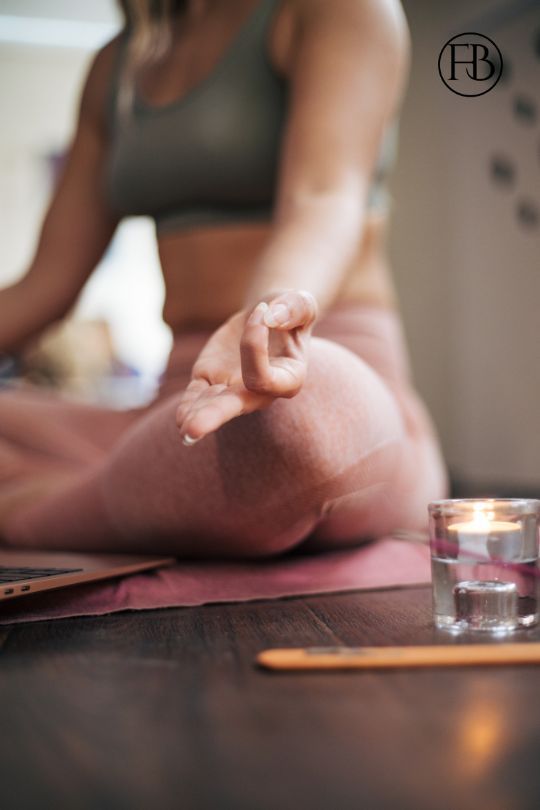
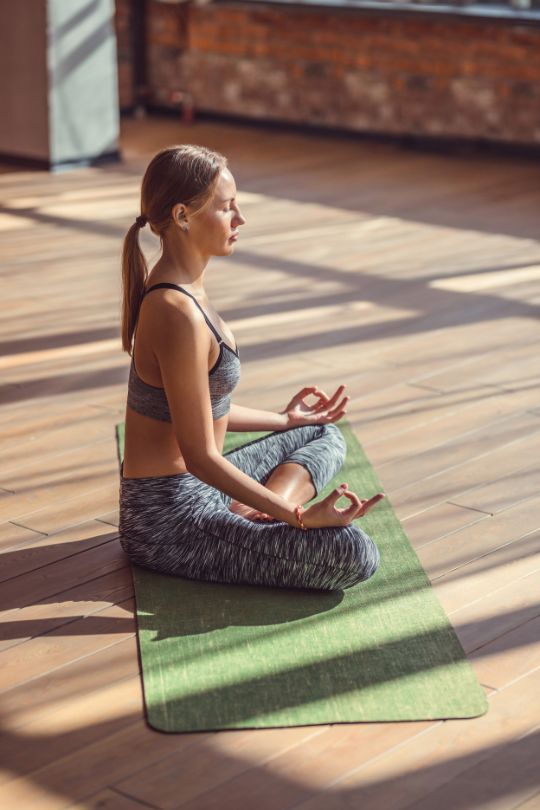
We've compiled a list of super-effective yoga poses that are perfect for us, the knowledge-hungry students. Let's start with the Eagle Pose (Garudasana) 🦅 - it's not just about balance, it also boosts your mental clarity. Who knew being an eagle could be so cool, right?
Next is the Camel Pose (Ustrasana) 🐪 - it's all about opening your heart and your mind. Talk about getting some perspective! And the Dolphin Pose (Ardha Pincha Mayurasana) 🐬 - it's like a boost of focus and strength.
But hey, yoga isn't just about poses. Ever heard about Pranayama? It's a set of breathing techniques that can help you control your breath and keep you zen amidst that exam stress. Take Nadi Shodhana - it's all about clarity of mind, reducing anxiety and restoring energy. And there's more where that came from.
Yoga for students is a game-changer. It reduces stress, boosts focus, improves physical well-being, and more. So, why not give it a try? 🌸 It's a journey to a healthier, happier YOU.
Happy yoga-ing, folks! 🌟
Stay tuned for more tips on yoga and student life! Yoga on, friends!
#YogaLife#StudentWellness#CollegeStressRelief#MindBodyBalance#YogaPoses#BreathControl#StudentHealth#ExamStressRelief#YogaJourney#HealthyMindHealthyBody#YogaTips#StudentLifestyle#YogaForStudents#StayZen#StayFocused#YogaInspiration#YogaCommunity#YogaForLife#YogaLove#YogaEverywhere#students#college life#college
1 note
·
View note
Text
Yoga: ¿Por qué nos lesionamos y cómo evitarlo?

El yoga es una práctica que trabaja el cuerpo conectándolo con la respiración y la mente. Por esta razón se ha popularizado como una disciplina para manejar el estrés (muy necesario hoy en día) y para ganar fuerza y elasticidad.
Incluso, se ha utilizado como rehabilitación para lesiones.
Es por esto que cuando llegamos a sentir molestias en la práctica nos preguntamos ¿cómo es posible que me haya lastimado en una práctica tan beneficiosa? O peor aún, decidimos que el yoga no es para nosotros pues nos hace sentir dolor.
Empecemos por el principio: el yoga no debe doler. Bajo ese concepto, en realidad, ningún tipo de actividad física debería de doler. Cuando nos movemos de manera adecuada y mecánicamente congruente, cuando nuestro cuerpo tiene el estímulo correcto y cuando sabemos escucharlo y conocer sus límites; lastimarnos y lesionarnos no debería ser una consecuencia de mantenernos activos.
Esto nos obliga a mirar un poco más a fondo el por qué de las lesiones generadas por algunas posturas de yoga, y más aún, cómo podemos prevenirlas para así beneficiarnos de esta práctica. Si te sientes identificado, sigue leyendo.

Las lesiones más comunes en el yoga, debido a una mala práctica - o a veces también una mala guía - son las siguientes:
Espalda baja (Columna lumbar)
Posturas de yoga en extensión como: Cobra, Perro Que Mira Hacia Arriba, Puente, Arco.
Posturas en flexión como: Uttanasana, Paschimottanasana, Perro Que Mira Hacia Abajo.
La extensión de la columna requiere una correcta estabilización de la pelvis y los músculos del tubo interno. (también conocido como “core”)
Asegúrate de mantener el ombligo “hacia arriba y hacia adentro”, llevando la pelvis a una posición ligeramente posterior. De esta manera, las últimas vértebras tendrán espacio para moverse sin recibir tanta presión en los discos.
La flexión de la columna, aunque es posible pues tenemos ese rango de movilidad disponible, no es tan profunda. Para posturas como Uttanasana, debemos usar la pelvis como bisagra (conocido como “hip hinge”) asegurándonos que la movilidad al inclinarnos hacia adelante viene de esta zona, con un alargamiento de los músculos isquiotibiales. Si no logras “llevar los isquiones hacia arriba”, es mejor mantener las rodillas flexionadas y asegurarte que tu columna se mantiene recta.
Hombros
Posturas de yoga como: Chaturanga, Pincha Mayurasana, Vasisthasana.
El hombro es una articulación compleja y con mucha movilidad, teniendo a un grupo de músculos conocidos como el manguito rotador para moverla y al mismo tiempo estabilizarla. Además, carga bastante peso durante la práctica. Seguir la alineación de las posturas con precisión se vuelve clave para evitar que se lesione. Recuerda que codo, muñeca y hombro deben de ir en la misma línea de carga en posturas como plancha o Vasisthasana, y los Chaturanga no deben pasar de un ángulo de 90º, si es muy difícil aún y tiendes a colapsarte al piso o a dejas caer la pelvis, hazlo en rodillas hasta que lo tengas seguro.
Muñecas
Posturas de yoga como: Parado de Manos, Plancha, Equilibrios como Cuervo o Astavakrasana.
Nuestras manos son estructuras maravillosas para agarrar, sentir, sujetar y más; pero debemos recordar que éstas no están diseñadas para cargar el peso de nuestro cuerpo. Esto no quiere decir que no sea posible lograrlo, pero debemos tener ciertas consideraciones, además de trabajar la carga de manera progresiva.
Cuando sentimos presión o dolor en las muñecas, debemos cuidar que nuestras manos y antebrazos estén correctamente activos muscularmente para que puedan asistir en el proceso de carga, y no dejar todo el peso sobre la articulación de la muñeca. La mejor manera de evitar lesionarte es calentar correctamente y trabajar de manera progresiva, escuchando los límites de tu cuerpo. Con la práctica y la consistencia a lo largo del tiempo, podrás sostenerte cada vez más sobre esta estructura.
Rodillas
Posturas de yoga como: Loto, Virasana, Guerrero I y II.
La rodilla es una articulación de bisagra, lo que quiere decir que solamente es capaz de flexionarse y extenderse. Las lesiones llegan cuando le pedimos que realice un movimiento para el que no fue diseñada: rotar.
En posturas como el Loto, cuando no tenemos suficiente movilidad en la cadera, comenzamos a exigirle a la rodilla que asista en la rotación, generando un efecto de torque. Como diría la expresión, se hace una “manita de puerco”, creando mucha más presión de la que es capaz de recibir.
Recuerda: no intentes compensar con tu rodilla lo que tu cadera no puede hacer. Trabaja en tu movilidad y respeta a tu cuerpo.
En los Guerreros, tendemos a olvidarnos de la activación de los rotadores externos de cadera, generando que la rodilla se incline o rote ligeramente hacia adentro. Cuando esto suceda, recuerda que todo debe estar alineado: tu rodilla debe ir en la misma dirección que está apuntando tu pie.
¿Un tip? activa el glúteo. Si necesitas ajustar la postura para tu anatomía única, hazlo. La postura perfecta es la que puedes hacer sin dolor.
En conclusión…
El yoga no va a lastimarte, pero como todo, debes tener una práctica responsable y única para tu cuerpo. Considera lo siguiente para mejorar tus prácticas de yoga. Si pudiera resumirlo, te dejaría estos puntos:
Si hay dolor no quiere decir que hay rigidez. No siempre más es mejor y no debes constantemente buscar ir más profundo. El dolor es una señal, escúchalo y ajusta lo que sea necesario.
Considera tu anatomía única. No todos los cuerpos son iguales, habrá algunas posturas que no son para ti, y eso está bien. Adecúa la postura a tu cuerpo, no tu cuerpo a la postura.
Dale variabilidad. Al yoga le acompaña muy bien el entrenamiento de fuerza, te dará estabilidad, te ayudará a proteger tus articulaciones y desarrollarás masa muscular (que es la fuente de la juventud) Quizás te lo contemos en otro blog. Encuentra algo que disfrutes hacer y súmalo a tu rutina, verás avances mucho más consistentes.
Conoce y respeta el límite que marca tu cuerpo. El camino lento es el camino rápido, pues una lesión puede dejarte fuera por muchos meses. Dale tiempo al tiempo, trabaja con consistencia, y suelta la expectativa. Tu práctica de yoga ya es perfecta.
0 notes
Photo
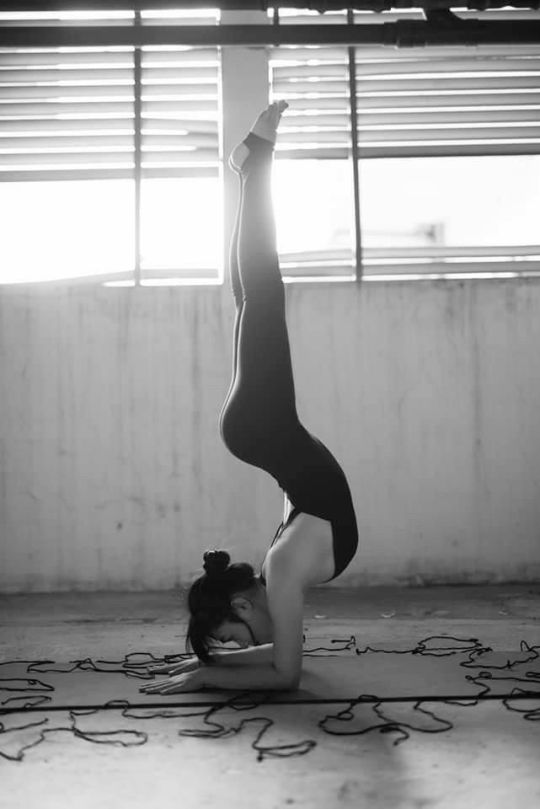
(via 'Yoga Lover' Poster, picture, metal print, paint by Datu Buwan | Displate | Posturas de yoga, Yoga beneficios, Clase de yoga || Curated with love by yogadaily)
#pincha mayurasana#yogabun#loft#yoga#yogi#yogini#yoga inspiration#yoga motivation#yoga pose#yoga poses#asana#asanas#yoga posture#motivation#inspiration#inspire#inspirational#fitness#health and fitness#manifesting#manifest#manifestation#Aesthetic#yoga aesthetic#fitness aesthetic
89 notes
·
View notes
Text
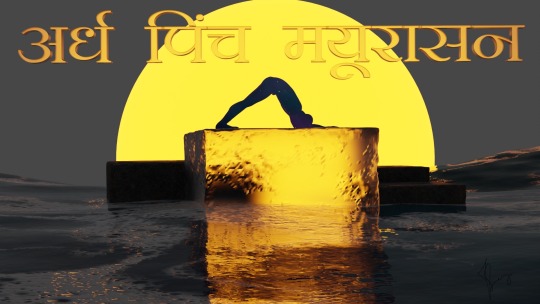
Ardha Pincha Mayurasana, also known as Dolphin Pose, is a yoga pose that helps build upper body strength and improve flexibility. Here are the key steps in bullet points to attain Ardha Pincha Mayurasana:
**Starting Position:**
- Begin in a tabletop position (hands and knees) with your wrists directly under your shoulders and knees under your hips.
**Execution:**
1. Lower your forearms to the mat, keeping them parallel to each other and shoulder-width apart.
2. Ensure your elbows are directly under your shoulders.
3. Curl your toes under and lift your knees off the ground, coming into a modified Downward Facing Dog position on your forearms.
4. Keep your hips high, forming an inverted "V" shape with your body.
5. Press firmly through your forearms and engage your core muscles to prevent sagging.
6. Gaze towards your feet or let your head hang naturally between your arms.
7. Push your heels toward the floor, but they may not touch the ground in this pose.
8. Breathe deeply and hold the pose for a few breaths or as long as comfortable.
9. To release, lower your knees to the mat and come back to the tabletop position.
**Alignment and Tips:**
- Keep your spine straight and engage your abdominal muscles to avoid arching your lower back.
- Relax your neck and let your head hang freely.
- Press firmly through your forearms, spreading your fingers for stability.
- Aim to maintain a 90-degree angle at your elbows.
- Focus on your breath, taking slow and controlled inhales and exhales.
- Practice regularly to build strength in your shoulders and upper body.
- Modify the pose by bending your knees slightly if you're a beginner or working on your flexibility.
**Benefits:**
- Strengthens the shoulders, arms, and upper back.
- Improves core strength and stability.
- Stretches and tones the hamstrings and calves.
- Enhances balance and concentration.
- Helps relieve stress and tension.
**Safety Note:** If you have any wrist or shoulder injuries or conditions, consult with a yoga instructor or healthcare professional before attempting Ardha Pincha Mayurasana. You can also use props like a folded mat under your forearms for added support and comfort.
0 notes
Text
Awaken Your Chakras with Yoga in Rishikesh
Are you seeking a transformative experience that harmonizes your mind, body, and soul? Look no further than Rishikesh, the birthplace of yoga and a haven for spiritual seekers. Nestled in the foothills of the majestic Himalayas, this ancient city has been a sanctuary for those in pursuit of self-discovery and inner peace for centuries. In this article, we will explore the profound practice of yoga in Rishikesh and how it can help you awaken your chakras, allowing energy to flow freely throughout your being.
Understanding the Chakras
Before delving into the depths of yoga, let's first understand the chakras. In traditional Indian philosophy, chakras are believed to be energy centers within the subtle body. There are seven main chakras, each associated with specific physical, emotional, and spiritual aspects of our being. These energy wheels play a crucial role in our overall well-being and are instrumental in maintaining balance and vitality.
1. Root Chakra (Muladhara): Located at the base of the spine, this chakra represents stability and grounding. It governs your basic survival needs and is associated with the color red.
2. Sacral Chakra (Swadhisthana): Situated just below the navel, this chakra is linked to creativity, sensuality, and pleasure. Its color is orange.
3. Solar Plexus Chakra (Manipura): Found in the upper abdomen, this chakra is related to personal power, confidence, and self-esteem. It is represented by the color yellow.
4. Heart Chakra (Anahata: Located in the center of the chest, this chakra embodies love, compassion, and emotional balance. Its color is green.
5. Throat Chakra (Vishuddha): Positioned at the throat region, this chakra governs communication and self-expression. Its color is blue.
6. Third Eye Chakra (Ajna): Found between the eyebrows, this chakra is associated with intuition, insight, and spiritual awareness. Its color is indigo.
7. Crown Chakra (Sahasrara): Situated at the top of the head, this chakra represents spiritual connection and enlightenment. Its color is violet or white.
The Transformative Power of Yoga
Yoga is not merely a physical exercise; it is a holistic practice that encompasses the body, mind, and soul. Through a combination of physical postures (asanas), breath control (pranayama), and meditation, yoga offers a pathway to unblock and activate the chakras, allowing the vital energy (prana) to flow smoothly.
1. Grounding through Asanas
The practice of yoga in Rishikesh often begins with grounding asanas that focus on the root chakra. Poses like **Tadasana (Mountain Pose)** and **Virabhadrasana (Warrior Pose)** help in establishing a sense of stability and security. These foundational postures form the base for a deeper exploration of the chakras.
2. Opening the Heart Chakra
The heart chakra, situated at the center of the chest, is vital for emotional healing and balance. Heart-opening asanas like **Ustrasana (Camel Pose)** and **Bhujangasana (Cobra Pose)** are commonly practiced to release any blockages and embrace love and compassion.
3. Activating the Third Eye
The third eye chakra is associated with intuition and inner wisdom. To activate this center, yogis often practice **Balasana (Child's Pose)** and **Ardha Pincha Mayurasana (Dolphin Pose)**, which enhance clarity of thought and insight.
4. Connecting with the Crown Chakra
The crown chakra, located at the top of the head, is the gateway to spiritual transcendence. **Sirsasana (Headstand)** and **Sahasrara Padmasana (Lotus Headstand)** are advanced poses stimulating this chakra, facilitating a deeper connection with the divine.
The Spiritual Vibration of Rishikesh
Rishikesh's natural beauty, spiritual legacy, and the presence of numerous ashrams and yoga schools create an unparalleled atmosphere for inner exploration. The positive energy radiating from the sacred Ganges River further amplifies the transformative power of yoga and meditation practices.
Conclusion
Embarking on a yoga in Rishikesh is an invitation to unlock the potential within you. By understanding and aligning the chakras through yoga, you can experience a profound shift in your life. Awaken your chakras in the serene embrace of Rishikesh, and you will discover an enhanced sense of harmony, enlightenment, and inner peace that will stay with you long after you leave this spiritual haven.
So, take a leap of faith, immerse yourself in the ancient art of yoga, and let the divine energy guide you towards a more fulfilling and awakened existence. Rishikesh awaits, ready to unveil its transformative secrets and elevate your spiritual journey like never before.
0 notes
Photo
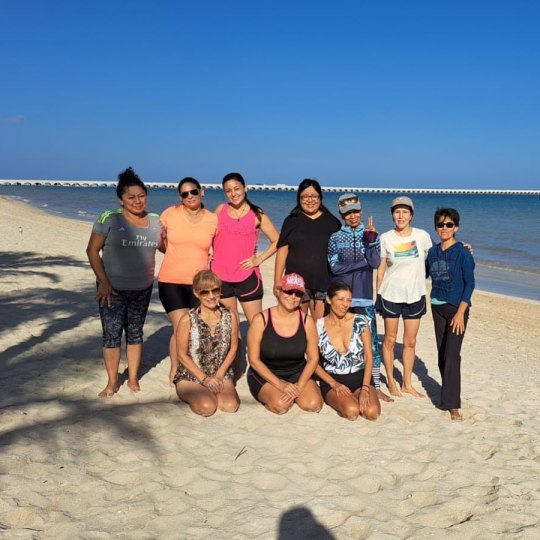
Ya se volvió un clásico: Yoga en la playa del grupo de WhatsApp “Holísticamente Nuevas”. Beneficios saludables: 1. Producimos vitamina D al estar expuestos a la luz solar. 2. Mejoras la energía con una mejor oxigenación al respirar aire fresco, además si estás en la playa el ambiente suele ser más limpio. Consejo: Aprovecha para respirar profundamente durante la práctica y limpia tus pulmones con aire limpio. Ventajas de hacer yoga en la playa: 1. La arena es una superficie en la que trabajas más la parte muscular para encontrar la estabilidad y equilibrio. Los movimientos de la arena obligan al cuerpo a hacer pequeño ajustes para activar algunos músculos que no solemos usar habitualmente para esas posturas. Yoga en la arena (o en el césped) es más intenso. 2. Es el mejor lugar para practicar las posturas invertidas y superar el miedo a caer. Hay poco riesgo de hacerte daño, aprendes en caer y sales de tu zona de confort con tensión. Es el mejor espacio de práctica para el pino/ sirsasana o el equilibrio sobre ante brazos/pincha mayurasana. 3. La playa es un buen lugar para practicar las posturas de equilibrio de pie, es un reto pero permite mejorar y profundizar. La superficie cambiante de la arena obliga en buscar la estabilidad con la coordinación de los músculos del cuerpo. 4. El sonido del mar ayuda a llevar su ritmo para tu propio "flow" y busca crear una sintonía entre tu respiración, tu cuerpo y la naturaleza. Cambia tu ritmo habitual de vinyasa o de práctica con música por el sonido del mar. Admin del chat holístico: Vivian Vera #yogaenlaplaya #nuevasenmerida #playaprogreso #yucatanturismo #holistica #holistichealth #yoga #yogainspiration (en Progreso Yuc) https://www.instagram.com/p/CpNvYCwrPH0/?igshid=NGJjMDIxMWI=
#yogaenlaplaya#nuevasenmerida#playaprogreso#yucatanturismo#holistica#holistichealth#yoga#yogainspiration
0 notes
Photo

#AloGetUpsideDown Start date 1/8/2023 - 1/15/2023 Challenge Details: New year, new start to inversions! This challenge is about the explorations on the versatility of going upside down, whether it be something more active and vigorous or something more passive and gentle. Join our inspiring 8 day challenge and explore how you can get upside down. Pose Line-Up Day 1: Downward Facing Dog Day 2: Uttanasana Day 3 : Dolphin with variations Day 4: Crow Day 5: Bridge moving towards wheel Day 6: Pincha Mayurasana Day 7: Handstand Day 8: Legs up the wall Instagram Handles @chrisnguyenmoves @ellesirilak @tymihoward @samhannyoga @_sheldonshannon @allurefitness #charlestonyoga #yogateacher #yogateachertraining #manifestyoga #manifestmiracles #manifest #godwinks #aloyogachallenge #alo #aloyoga #igchallege #alomoves #aloigchallenge #tymihoward #tymihowardyoga #tymibender #thebenders #benderfamily #benderyoga #jiy #jamesislandyoga #yogaonjamesisland #yogateacher #yogateachertraining (at Manifest Yoga with Tymi Howard) https://www.instagram.com/p/Cm9arXfuPh8/?igshid=NGJjMDIxMWI=
#alogetupsidedown#charlestonyoga#yogateacher#yogateachertraining#manifestyoga#manifestmiracles#manifest#godwinks#aloyogachallenge#alo#aloyoga#igchallege#alomoves#aloigchallenge#tymihoward#tymihowardyoga#tymibender#thebenders#benderfamily#benderyoga#jiy#jamesislandyoga#yogaonjamesisland
0 notes
